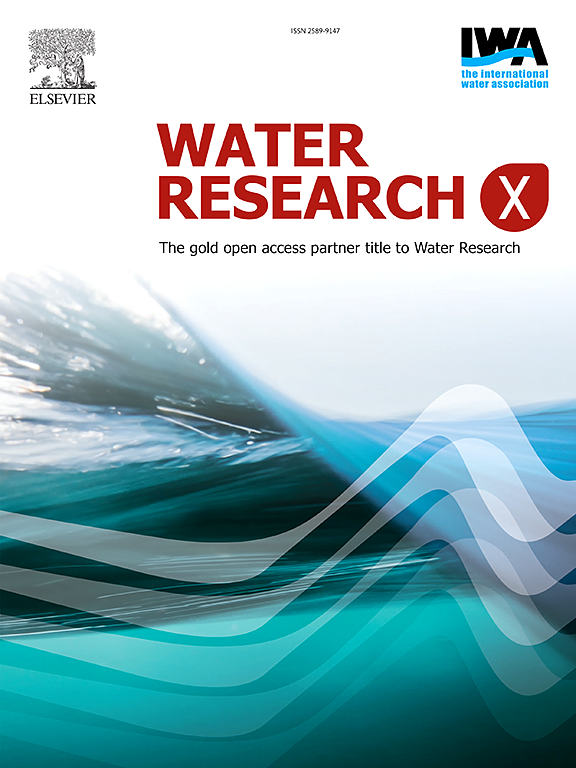Identification of characteristic factors for water quality indicators and development of a wastewater source signature system for receiving rivers
IF 8.2
2区 环境科学与生态学
Q1 ENGINEERING, ENVIRONMENTAL
引用次数: 0
Abstract
Wastewater treatment plant (WWTP) discharge has become a focal point in watershed management, and its aggregate impacts on receiving rivers have been preliminarily elucidated. However, the characteristic water quality patterns in receiving rivers under the influence of different WWTP discharges (domestic, mixed, and industrial) remain unclear. To address this gap, water quality indicators were analysed in samples collected upstream and downstream of the outfall during different water periods and characteristic factors were identified. A threshold system for identifying the characteristic water quality patterns was established based on indicator concentration ratios, and the threshold ranges for source-type water quality signature ratios were determined. The characteristic patterns were validated by selecting three characteristic section types (different regions, double outfalls, and long distances). The results showed that the concentrations of most indicators at the downstream of outfalls were 5 % − 70 % higher than those at the upstream, and the water quality index quantified downstream deterioration (0.46 − 0.69). Furthermore, anions and metallic elements were identified as the characteristic factors. Based on these analyses, threshold ranges for source-type water quality signature ratio were determined: domestic (< 6.22), mixed (6.22 − 9.86), and industrial (> 9.86). Validation across the other characteristic sections confirmed that the results were within the threshold ranges. The strength of the indicator interaction by industrial wastewater discharge exceeded that of other wastewaters, thereby elucidating the differential characteristics mechanisms. This study provides a novel methodological framework for watershed water quality characterization, and the established threshold system holds significant practical value for aquatic environment management.
确定水质指标的特征因素和开发污水来源特征系统的接收河流
污水处理厂排放已成为流域管理中的一个重点问题,其对受水河流的总体影响已初步阐明。然而,在不同污水排放(生活、混合和工业)影响下,接收河流的特征水质模式尚不清楚。为了解决这一差距,在不同的水期,对排水口上游和下游收集的样本进行了水质指标分析,并确定了特征因素。建立了基于指标浓度比识别水质特征模式的阈值体系,确定了源型水质特征比的阈值范围。通过选择不同区域、双出口和长距离3种特征断面类型,对特征模式进行了验证。结果表明:水口下游大部分指标的浓度比上游高5% ~ 70%,水质指数量化了下游的恶化程度(0.46 ~ 0.69)。此外,阴离子和金属元素被确定为特征因素。基于这些分析,确定了水源型水质特征比的阈值范围:生活(< 6.22)、混合(> 9.86)和工业(> 9.86)。跨其他特征部分的验证确认结果在阈值范围内。工业废水排放的指标相互作用强度超过其他废水,从而阐明了差异特征机制。本研究为流域水质表征提供了一种新的方法框架,所建立的阈值体系对水环境管理具有重要的实用价值。
本文章由计算机程序翻译,如有差异,请以英文原文为准。
求助全文
约1分钟内获得全文
求助全文
来源期刊

Water Research X
Environmental Science-Water Science and Technology
CiteScore
12.30
自引率
1.30%
发文量
19
期刊介绍:
Water Research X is a sister journal of Water Research, which follows a Gold Open Access model. It focuses on publishing concise, letter-style research papers, visionary perspectives and editorials, as well as mini-reviews on emerging topics. The Journal invites contributions from researchers worldwide on various aspects of the science and technology related to the human impact on the water cycle, water quality, and its global management.
 求助内容:
求助内容: 应助结果提醒方式:
应助结果提醒方式:


